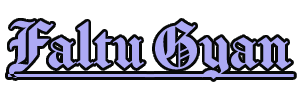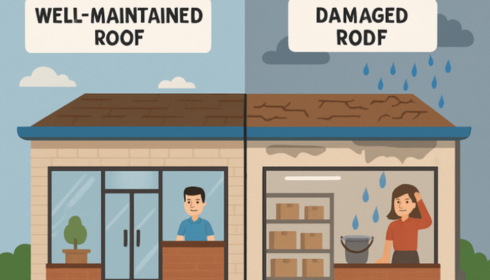Table of Contents
- The Connection Between Roof Maintenance and Business Continuity
- Recognizing Warning Signs Before They Become Disasters
- How Roof Issues Lead to Increased Business Costs
- Benefits of Addressing Commercial Roofing Concerns Promptly
- The Role of Professional Evaluation and Scheduled Inspections
- Making Timely Repairs Part of a Business Strategy
- When to Invest in Repairs Versus Replacement
- Building a Long-Term Maintenance Culture
- The Critical Role of Roof Maintenance in Ensuring Business Continuity
The Connection Between Roof Maintenance and Business Continuity
The roof is one of the most critical components of any commercial building, yet it’s often overlooked until a problem arises. A neglected roof can quickly become a threat to business continuity. Unexpected leaks or damage from overdue repairs can disrupt daily operations, threaten inventory, and force unplanned closures. Ensuring regular upkeep is not just about aesthetics; it safeguards the infrastructure that keeps businesses running without interruption.
Commercial roofs are subjected to relentless exposure to sun, rain, wind, and temperature fluctuations, which gradually wear down their materials. Over time, even robust roofing systems develop vulnerabilities that allow moisture intrusion or compromise thermal protection. Maintaining swift and targeted repairs, such as those provided by commercial roof repairs St. Louis County, MO, is an essential business investment that shields against costly disruptions and reinforces operational reliability.
Recognizing Warning Signs Before They Become Disasters
Early detection is key to preventing minor issues from escalating into full-blown emergencies. Common early warning signs include persistent pooling water, water stains on ceilings, blistering or bubbling of roofing materials, and separating seams. Neglecting these red flags often leads to water infiltration, structural compromise, and eventual system failures. Facilities managers should consult authoritative roof maintenance best practices to guide routine checks and prompt necessary interventions.
Training staff to report suspicious discoloration or unusual odors, especially after extreme weather events, can further accelerate response times and minimize the scope and costs of repairs.
How Roof Issues Lead to Increased Business Costs
When roof problems go untreated, the direct financial repercussions can be staggering. Chronic leaks can damage interior finishes, inventory, and equipment—leading to property loss and inflated insurance premiums. Business interruptions resulting from unsafe conditions or forced closures can erode customer trust and revenue streams. Moreover, even minor damage can reduce energy efficiency, causing heating and cooling systems to work harder and resulting in increased utility expenses.
Indirectly, a compromised roofing system can foster environmental hazards, such as mold, posing serious health risks to staff and visitors and potentially resulting in legal and remediation costs. Over time, deferred maintenance triggers extensive, urgent repairs that far exceed the expense of timely, routine care.
Benefits of Addressing Commercial Roofing Concerns Promptly
Proactive attention to small problems translates into significant long-term savings. Routine inspections and prompt repairs can extend the service life of your roofing system and reduce your maintenance budget over time. Businesses that prioritize commercial roof repairs benefit from sustained asset value, improved resale opportunities, and enhanced safety for occupants and customers.
Compliance with local and federal building codes is another critical advantage. Many regulations mandate regular roof maintenance to prevent safety violations and costly fines. Reliable roof performance also reassures employees and customers, fostering a healthy working environment and safeguarding the brand’s reputation.
The Role of Professional Evaluation and Scheduled Inspections
Engaging qualified professionals for scheduled evaluations is a vital element of commercial property management. Industry best practices recommend comprehensive biannual inspections—particularly after severe weather events—by certified roofing contractors who can spot subtle signs of imminent failure. Assessments should cover roof membranes, flashing, drainage systems, and structural supports to ensure complete integrity.
Making Timely Repairs Part of a Business Strategy
Integrating roof maintenance into facility management policies is a proactive approach that yields significant benefits. By adopting a strategy that schedules periodic inspections and budgets for minor repairs, businesses can prevent more significant, costly disruptions. Facility teams often conduct quarterly walk-throughs and plan for forecasted seasonal risks.
There are numerous real-world examples of companies averting major disasters through vigilance and readiness. Retailers and manufacturers who maintain strict adherence to repair schedules routinely avoid shutdowns due to leaks, water damage, or safety concerns, preserving both profitability and reputation.
When to Invest in Repairs Versus Replacement
While repairs are effective for isolated or moderate damage, there are circumstances when roof replacement becomes the smarter investment. Persistent leaks, widespread membrane shrinkage, significant structural sagging, or a roof nearing the end of its expected service life often indicate that further repairs are no longer cost-effective.
Ignoring these end-of-life warning signs may ultimately lead to catastrophic failures, mandatory evacuations, and liability for damages. Consulting an experienced roofing professional can help property owners balance repair costs with future savings and risk.
Building a Long-Term Maintenance Culture
Developing a culture of ongoing roof care fosters resilience and organizational pride. Thorough documentation, staff training, and scheduled evaluations should be embedded into the business process. This collective investment not only reduces emergency expenses but also boosts employee morale, as staff feel safer in a well-maintained facility.
For companies unsure about their next steps, seeking guidance from reputable sources and industry professionals can streamline decision-making and yield long-lasting returns.
The Critical Role of Roof Maintenance in Ensuring Business Continuity
The connection between roof maintenance and business continuity is crucial. A well-maintained roof not only protects the physical structure of a commercial property but also safeguards the operations, finances, and reputation of the business it shelters. Early detection of issues, timely repairs, and professional inspections are critical strategies for preventing costly disruptions and extending the lifespan of roofing systems. By integrating roof care into long-term facility management and fostering a culture of proactive maintenance, businesses can safeguard their assets, ensure a safe environment for employees and customers, and maintain operational resilience. Ultimately, prioritizing roof upkeep is not merely a matter of upkeep; it is a strategic investment in stability, efficiency, and long-term success.

